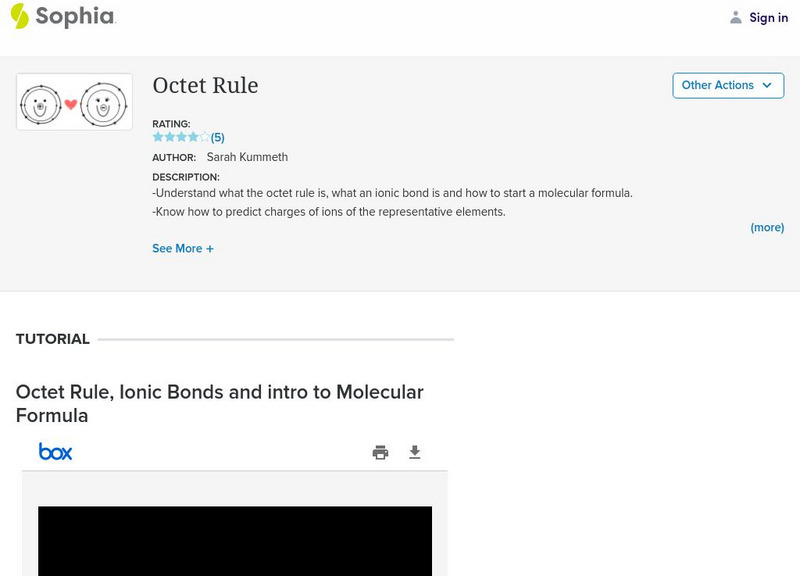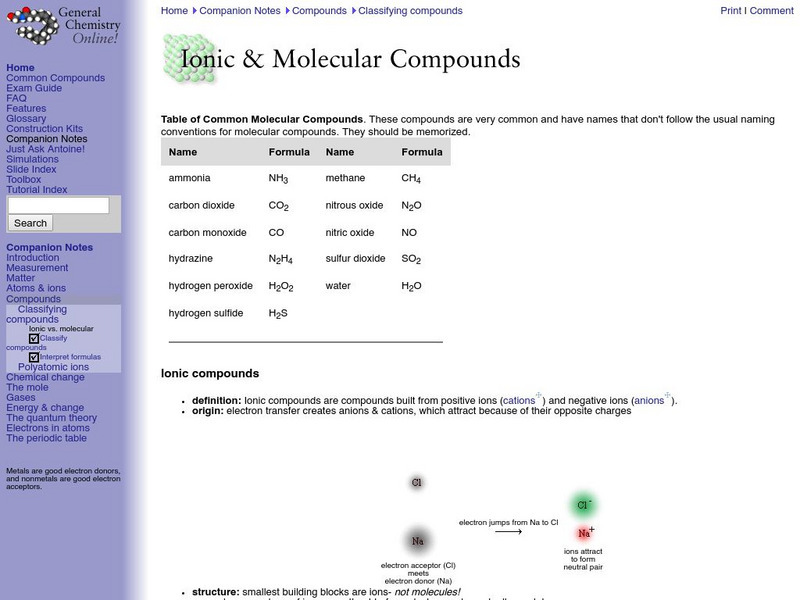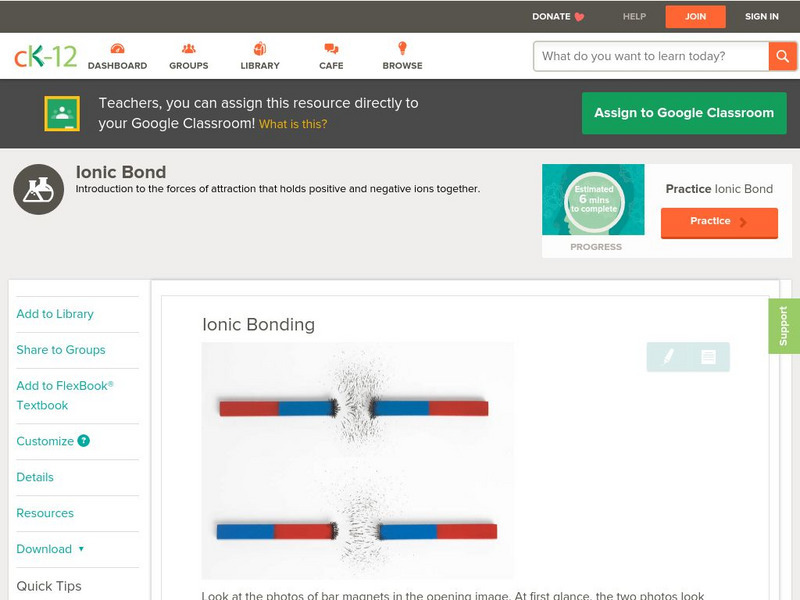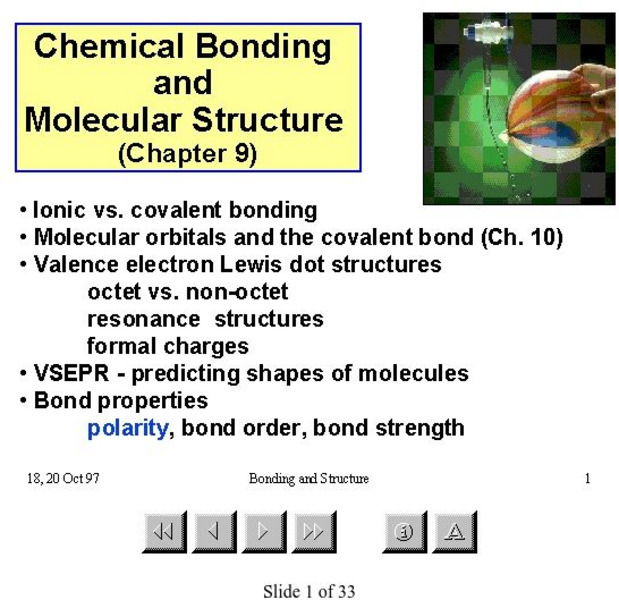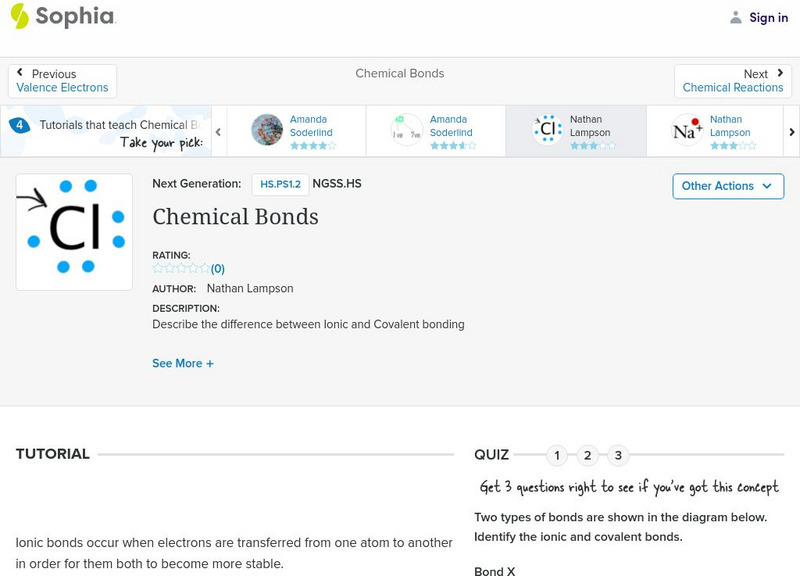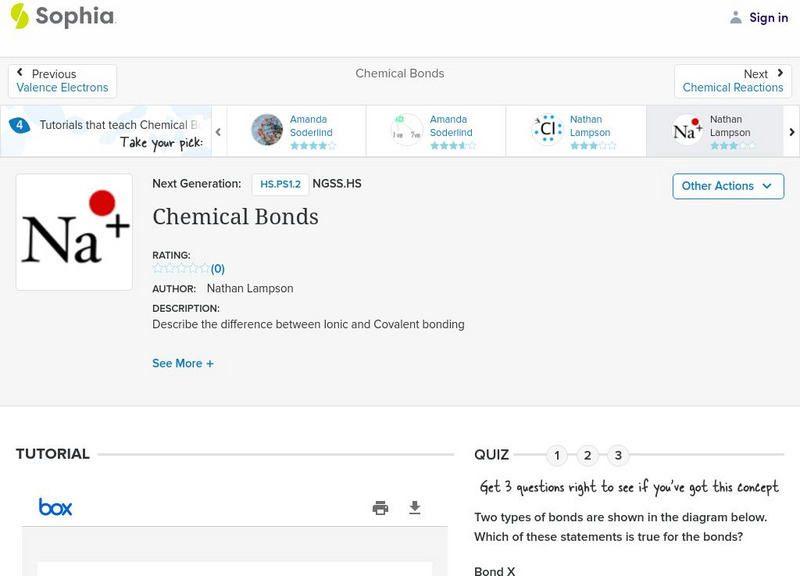Sophia Learning
Sophia: Electronegativity
Explore the concept of electronegativity and how it trends across the periodic table of elements. The author uses simple, humorous drawings to help with understanding.
Sophia Learning
Sophia: Octet Rule
Learn about the octet rule and ionic bonds in this slide show presentation. Then find out how to start a molecular formula.
Chem4kids
Chem4 Kids: Atoms: Electrons
Learn about an electron's negative charge, location, and role in bonding. Website also investigates electrons uses in electricity.
Chem Tutor
Chem Tutor: Bonds in General
A summary of bonding terms and the importance of electrons in bonding.
Chem Tutor
Chem Tutor: Radicals or Polyatomic Ions
This site includes a list of the names, formulas, and charges of some common polyatomic ions.
Other
University of Texas at Dallas: Attractions in Compounds
Explanation of attractive forces and energy changes involved in bonding.
Frostburg State University
General Chemistry Online: Ionic and Molecular Compounds
Provides a good outline of the concepts involved in ionic and covalent bonding, with links to definition of terms. Features a list of common molecular compounds and a chart that compares ionic and molecular compounds.
CK-12 Foundation
Ck 12: Chemistry: Ionic Bonding
[Free Registration/Login may be required to access all resource tools.] A tutorial about ionic bonding. Learn how and why they form, and the role of energy in their formation.
Chem Tutor
Chem Tutor: Binary Covalent Compounds
An explanation of bonding in binary covalent compounds. Rules for naming binary covalent compounds using common names and system names are also provided.
Biology Pages
Kimball's Biology Pages: Electronegativity
This site, which is a personal site from Kimball's Biology, provides an overview with multiple examples of electronegativity.
California State University
California State University Dominguez Hill: Born Haber
Interactive practice exercises in the use of the Born-Haber cycle to determine lattice energies of ionic compounds.
McMaster University
Mc Master University: Molecular Structure
This PowerPoint presentation features 33 slides that explain chemical bonding and molecular shape.
University of Waterloo (Canada)
University of Waterloo: Lattice Energy
This site from the University of Waterloo provides in-depth and advanced information on lattice energy. the site is designed to answer the two major questions, how is lattice energy estimated using Born Haber cycle, and how is lattice...
Sophia Learning
Sophia: Chemical Bonds: Lesson 2
Describe the difference between Ionic and Covalent bonding. This lesson is 2 of 5 in the series titled "Chemical Bonds."
Sophia Learning
Sophia: Chemical Bonds: Lesson 5
Describe the difference between Ionic and Covalent bonding. This lesson is 5 of 5 in the series titled "Chemical Bonds."
Oklahoma State University
Oklahoma State University: Bonding Rules of Thumb
Simple rules to help students identify types of chemical bonding.
BBC
Bbc: Gcse Bitesize Science: Different Substances
A short quiz over the general topics of atomic structure of different substances and bonding properties. The quiz gives immediate feedback over with explanation for the correct answer choice.
Science4Fun
Science4 Fun: Chemical Bonding
What is a chemical bond? Learn about the structure of an atom, why bonds are formed, and the different types of chemical bonds.



